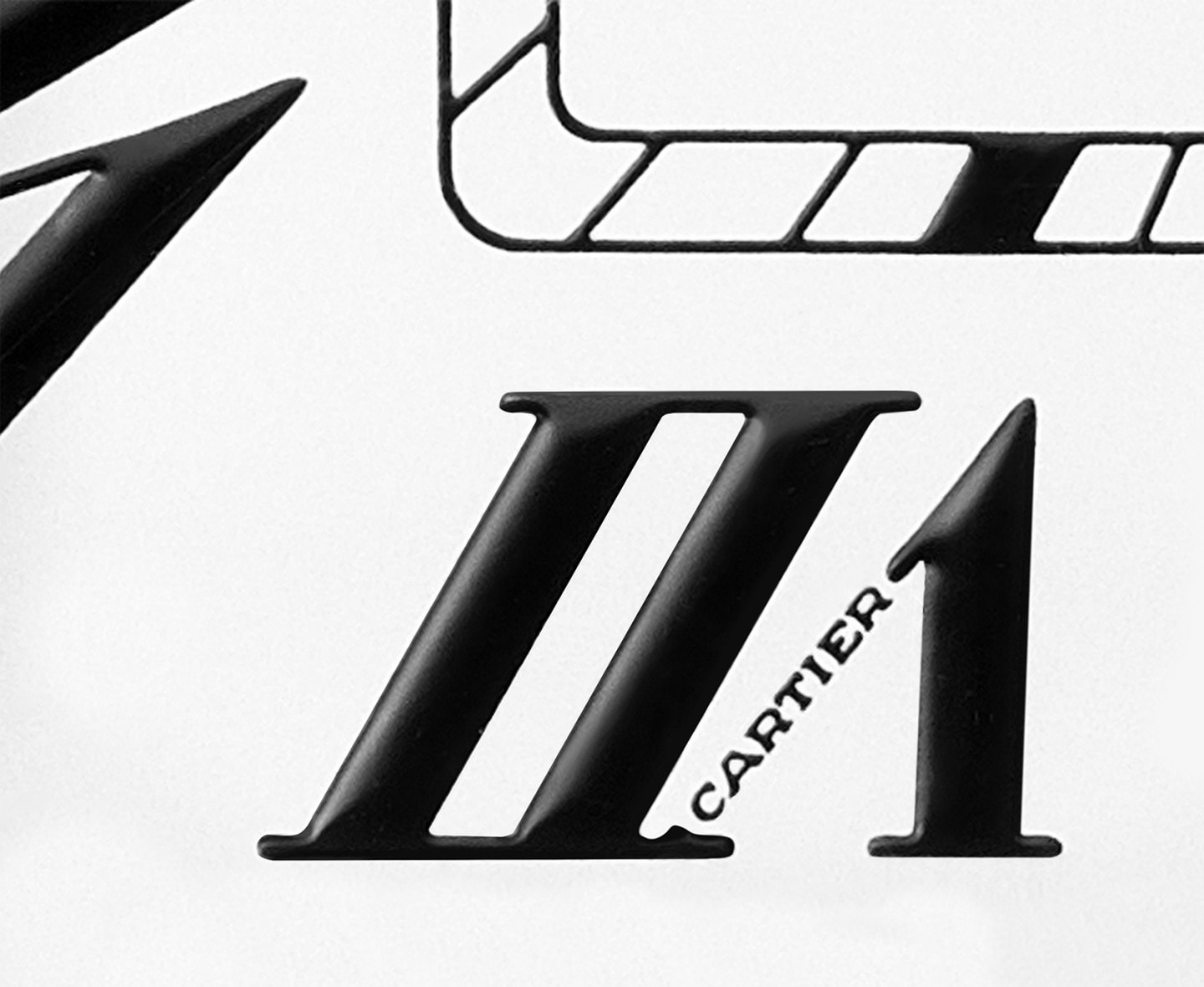
STYLE
The first timepieces started to appear in the Maison’s registers from 1853: men’s pocket watches as well as watches in the form of pendants, brooches and châtelaines for women.
Over the years, Cartier watchmaking has distinguished itself by focusing on the notion of design, symbolised in 1904 by the creation of the Santos de Cartier watch: the first modern watch designed to be worn on the wrist.
The Cartier watchmaking heritage is ever-evolving, allowing the Maison to revisit the shapes of timeless classics through new versions, all while remaining as faithful as possible to the historic model yet with modernised ergonomics that meet today's requirements.

For Cartier, it all starts with the design. An uncompromising feature. The line is clean and precise. This radical design concept, implemented by one of the only Maisons capable of creating a unique collection of iconic watchmaking pieces, will become Cartier’s signature.
Tank, Santos, Panthère or Ballon Bleu: instantly recognisable, these watches are based on four main principles of creation: the purity of the line, the accuracy of the shape, the precision of proportions, the precious details.
The intelligence of their design places them seamlessly within their time as well as securing their future. They can all be reinvented and continue to inspire conversations: a boundless source of creative energy which Cartier dares to develop over time.

In 1917, Louis Cartier took inspiration from the purity of the lines of the Tank watch to create a new watch shape. The two parallel brancards are an established signature of the Tank watch. The secret lies in the balance between the lines and shapes, the volume and harmony that emanate from the design and lend the Tank its remarkable elegance.

In 1904, Louis Cartier granted the aviator Alberto Santos-Dumont's wish: to be able to tell the time while flying, without having to let go of the controls to check his pocket watch. Cartier broke ground by imagining a square watch in a world dominated by round ones, whose screws, traditionally hidden in watchmaking, are made visible on the bezel. Rounded edges, symmetrical bevels and curving horns that converge towards the bracelet. Original precision allows Cartier to rework the proportions of the Santos watch according to the times.

First created in the 1980s, the Panthère watch is the ultimate jewellery watch. Instantly recognisable, the Panthère watch takes its name from the bracelet which exudes lusty sensuality and the fluidity of its links which coil seductively around the wrist. An iconic style that layers elegance upon elegance: the dainty square case with rounded corners, the refined visible rivets and the dial displaying all of Cartier's watchmaking codes.

Created in 2007 from a new vision of roundness, the Ballon Bleu case is domed on both the front and back. Its emblematic crown cap, which is incorporated into the case, makes it instantly recognisable. With this watch, Cartier pays homage to the great tradition of watchmaking and brings a new twist to its codes by transforming the “rail-track”, introducing the blue bubble, and adding the optical illusion of the domed sapphire crystal.

"Rail-tracks", cabochon sapphire, Roman numerals… Found on watches designed by the Maison since its creation, the aesthetic codes of Cartier watchmaking are still present in Cartier's watchmaking repertoire. Their unmistakable style and graphic identity make them timeless.

Black, graphic and sloping, the Roman numerals on the case radiate out from the central axis, reinforcing the purity of the line present on Cartier watches.

The dials feature a "rail-track": a double line with a minute scale. Its design resembles the tracks of a railway line. Louis Cartier is to thank for this highly unique design.

The blue hands are the product of a watchmaking tradition found in the Swiss mountains. It’s here, whilst seeking to find a way to prevent watch hands (which at that time were not water resistant) from corroding under the tough climate conditions, where the watchmakers invented the process of bluing. This expertise has since been preserved and carried out by Cartier in a unique way: the hands are placed in kilns that are heated to over 300° for a duration of time which is calculated down to the second in order to obtain the iconic blue colour of the Cartier hands.
Producing these hands requires over 20 different procedures and over 10 different techniques such as hammering, cutting and polishing. Each second, minute and hour hand is selected and paired so that the hands placed on each watch are the exact same blue colour.

Cartier winding crowns are set with either a sapphire cabochon or a blue spinel depending on the model. They bridge the gap between jewellery and watchmaking.

Cartier's winding mechanism is adorned with a seven- or eight-sided beaded or fluted crown depending on the iconic style of the Cartier timepiece.

Engraved on the dial, the Cartier guilloché decorates the watches. This decorative technique first appeared in the history of Cartier jewellery at the start of the 20th century. It consists of engraving fine lines on the plate of the dial to form different motifs such as waves or sunrays.

The Cartier signature is subtly placed at an angle in one of the Roman numerals on the dial.